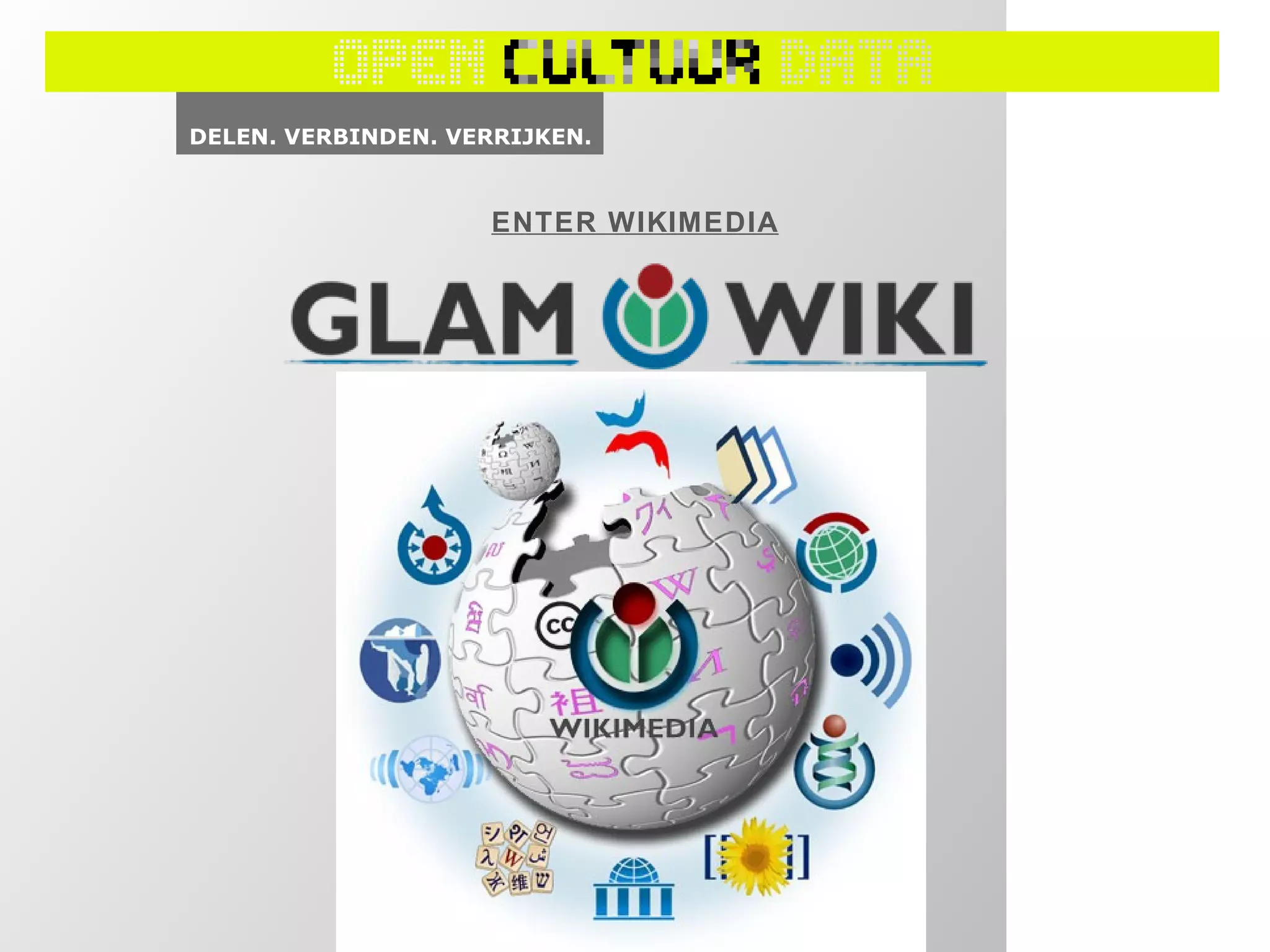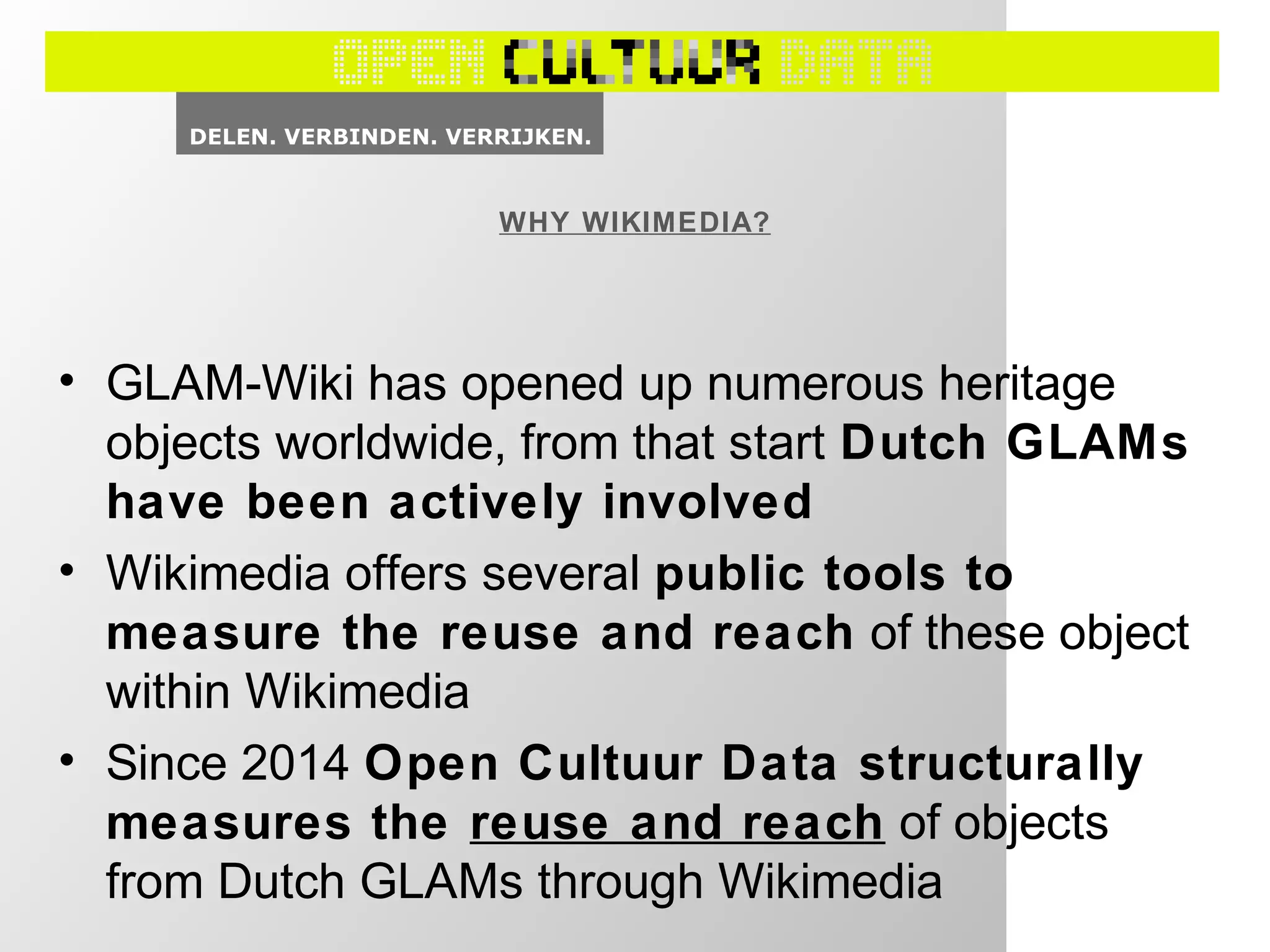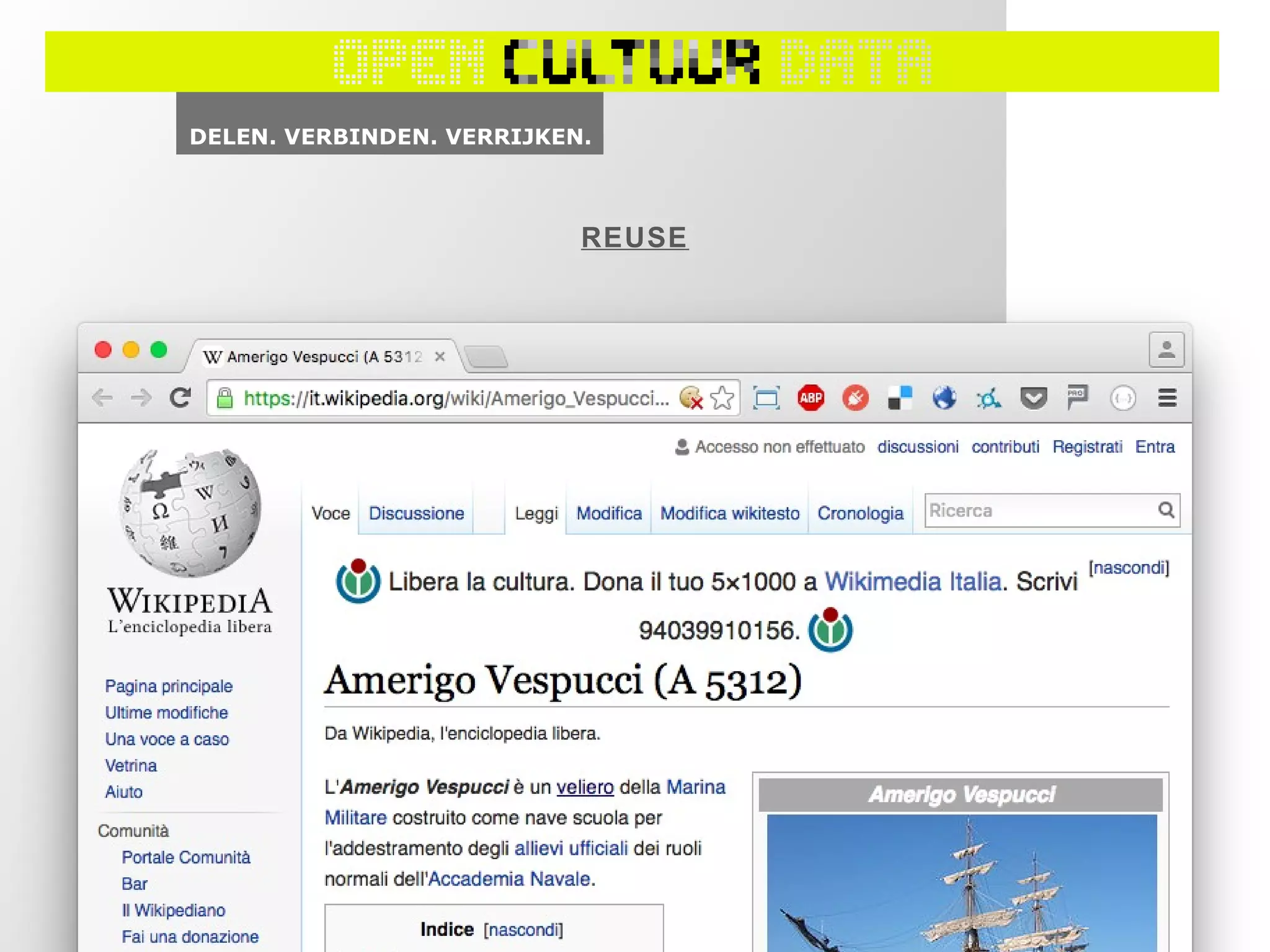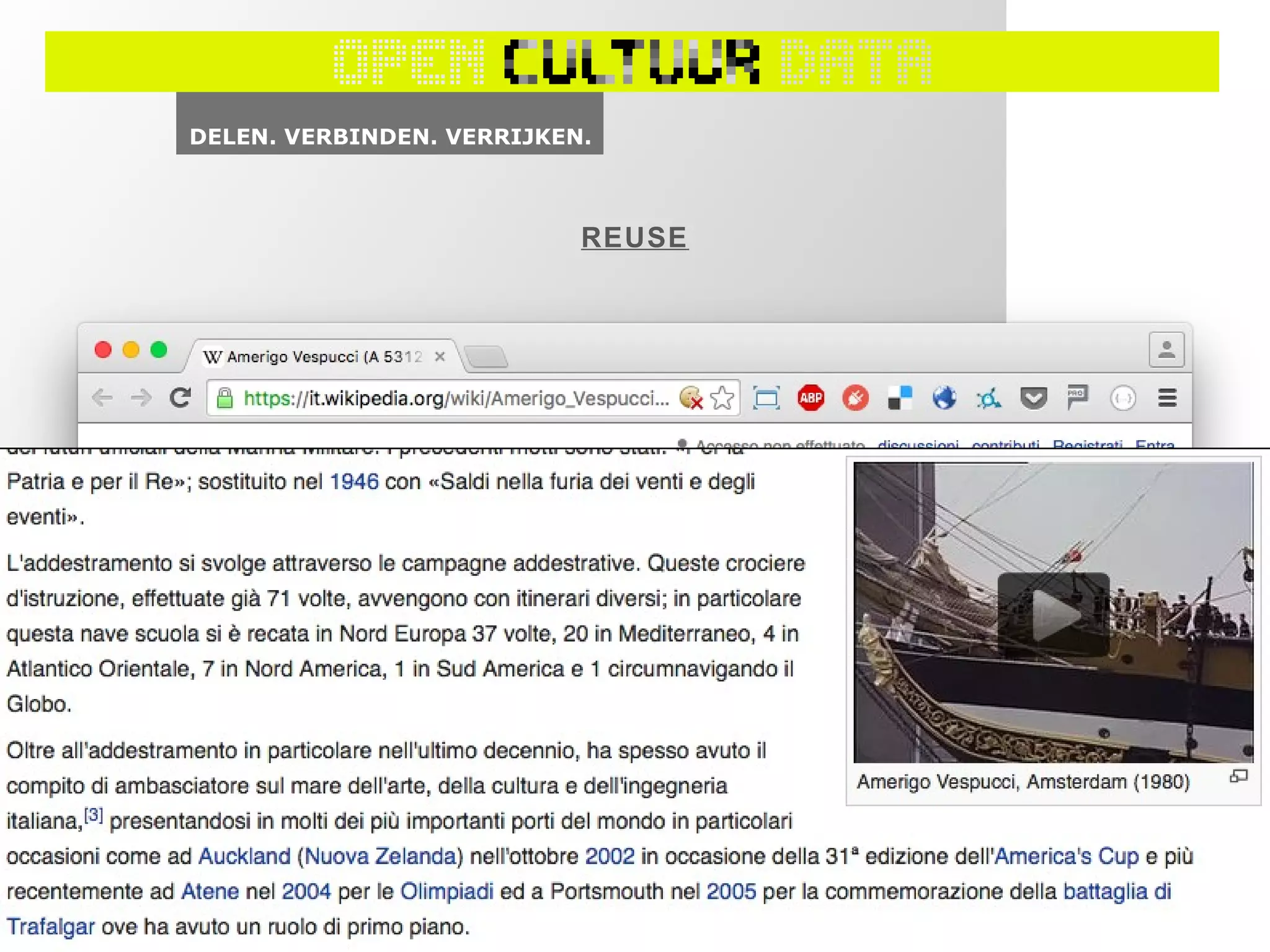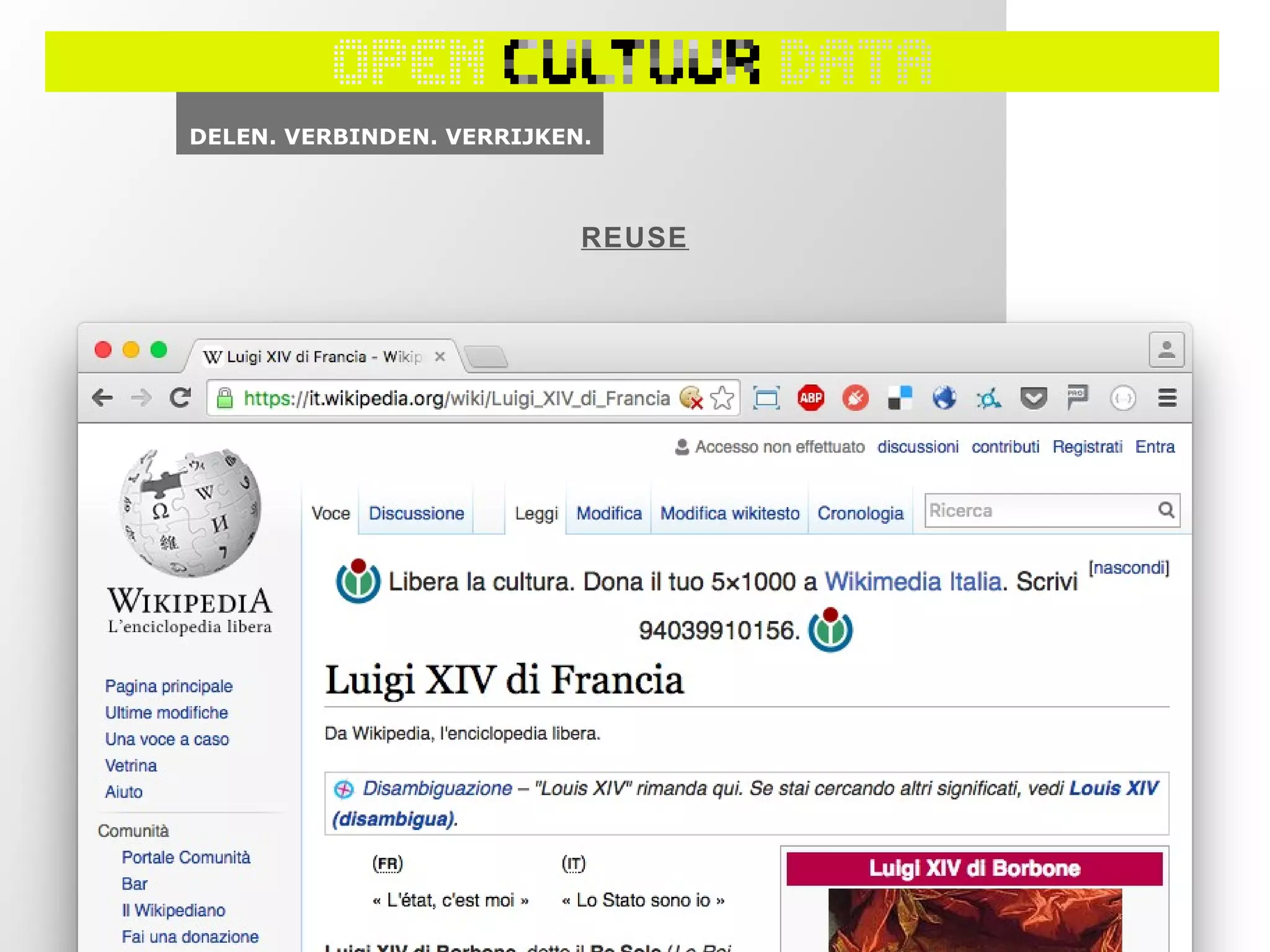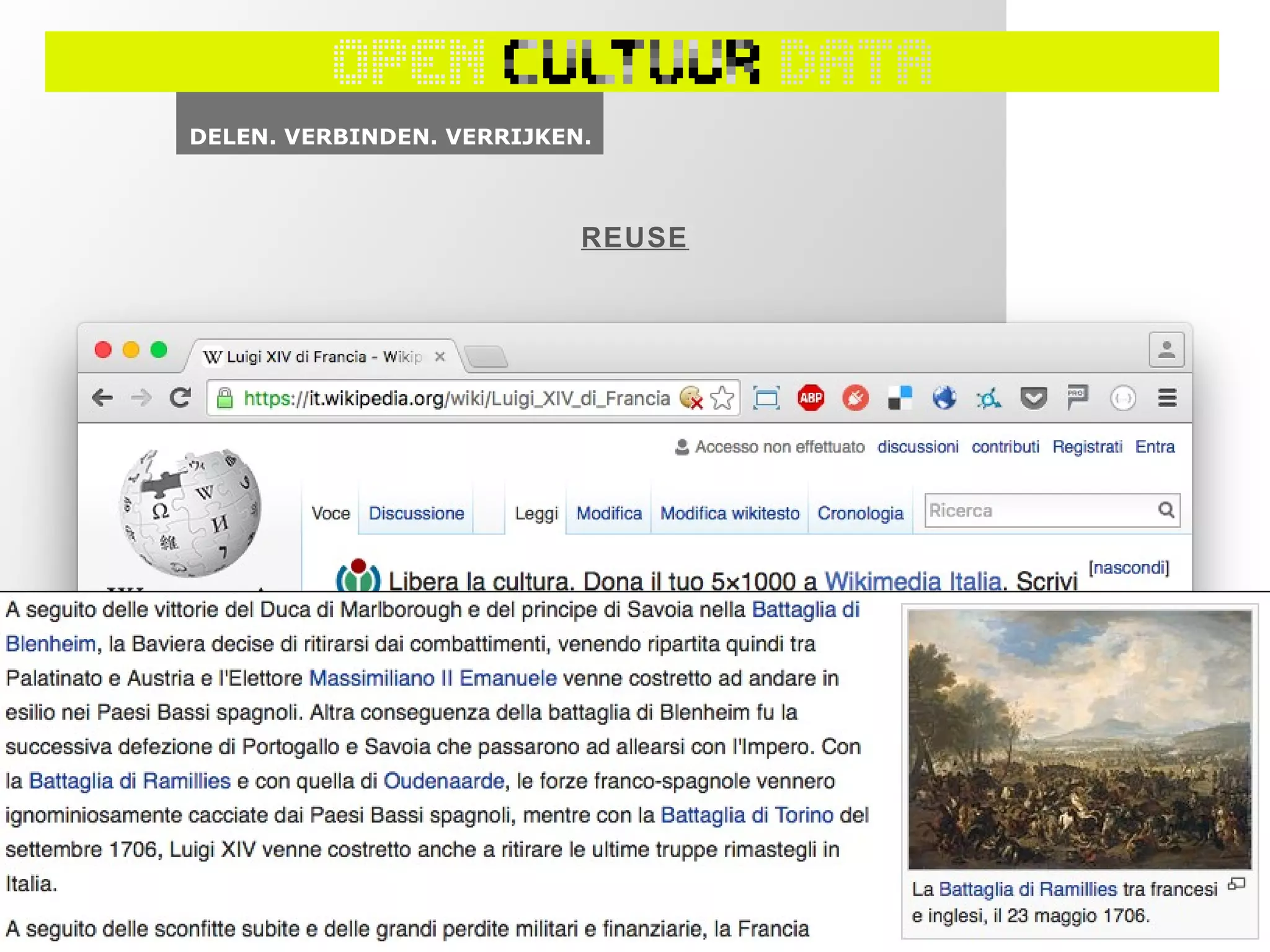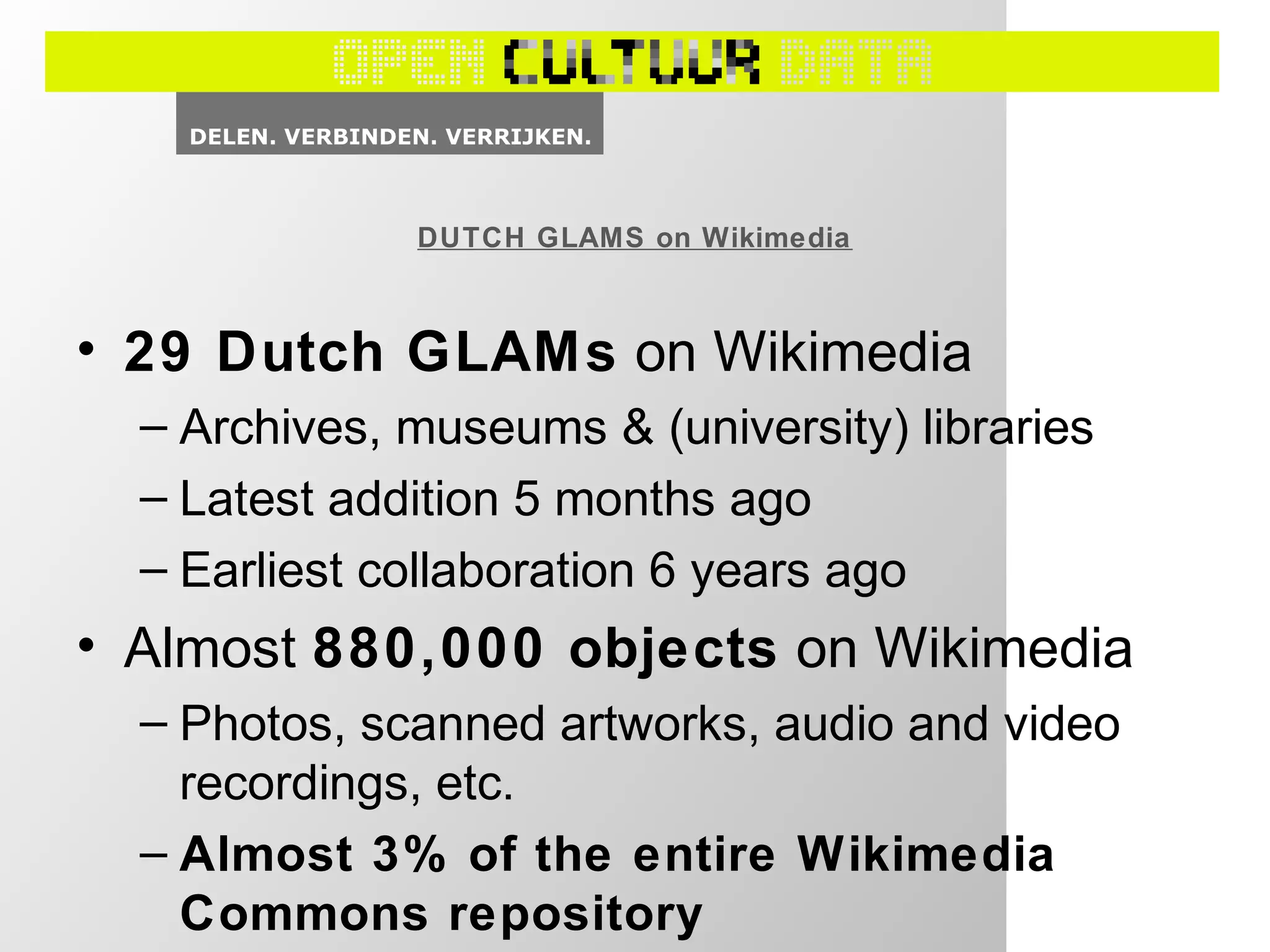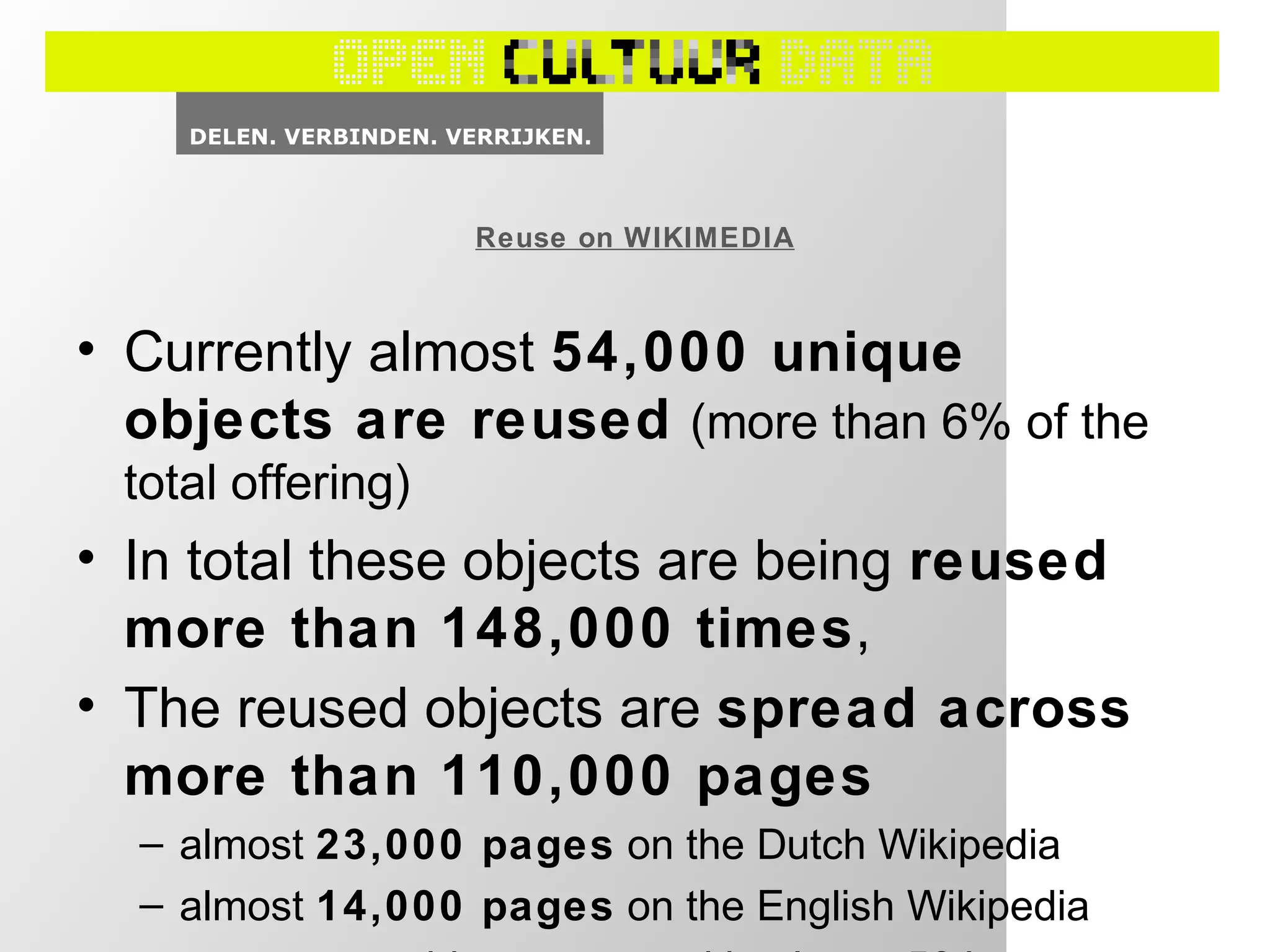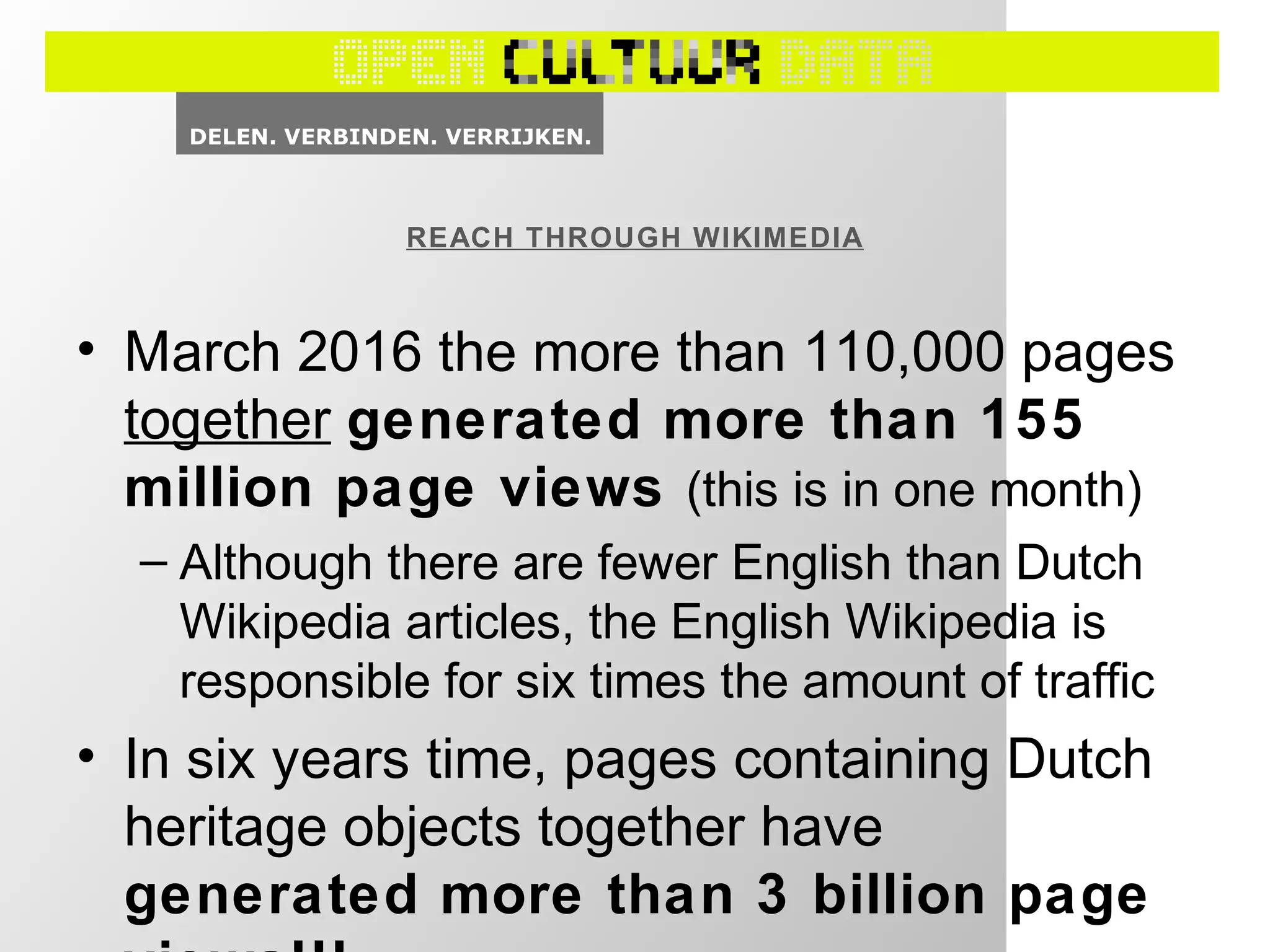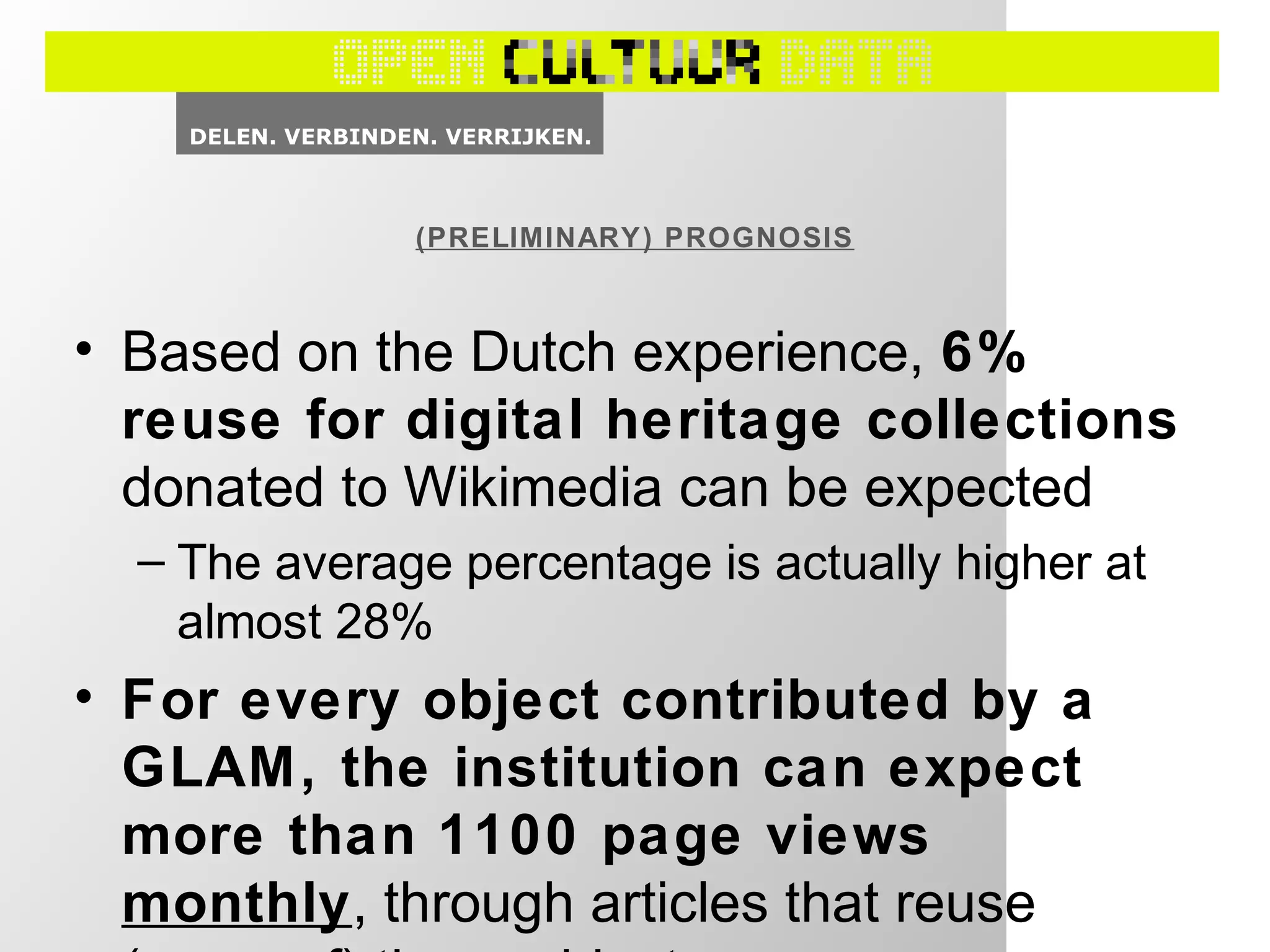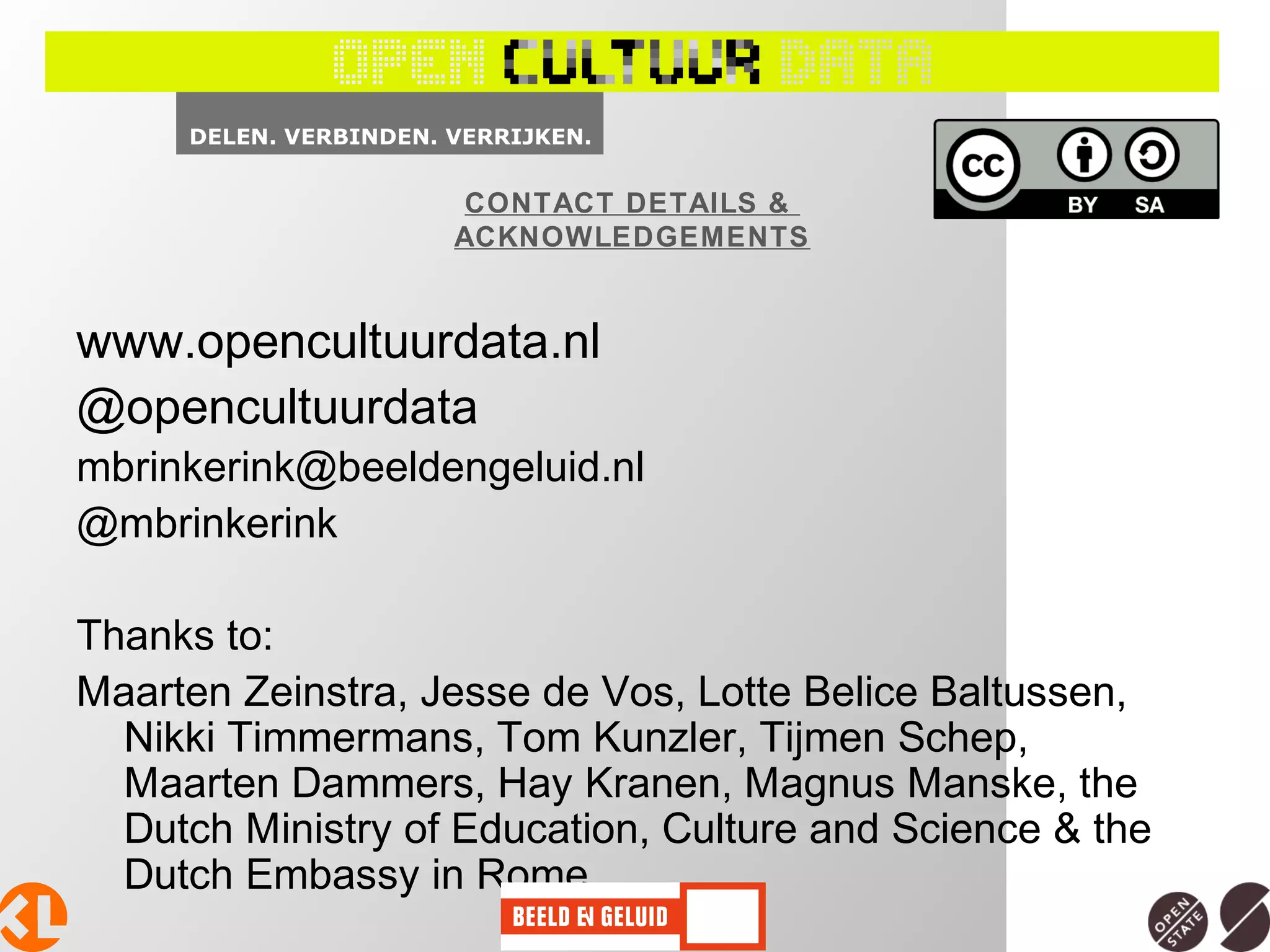This document discusses how Dutch cultural heritage institutions ("GLAMs") have successfully reached millions of people each month through Wikimedia projects like Wikipedia. It notes that 29 Dutch GLAMs contribute content like photos, artworks and recordings to Wikimedia Commons. Currently over 54,000 unique objects from Dutch GLAMs are reused over 110,000 Wikipedia pages, generating over 155 million page views in a single month. By openly sharing their digital collections, Dutch GLAMs have helped educate audiences of hundreds of millions about Dutch cultural heritage each year through Wikimedia.
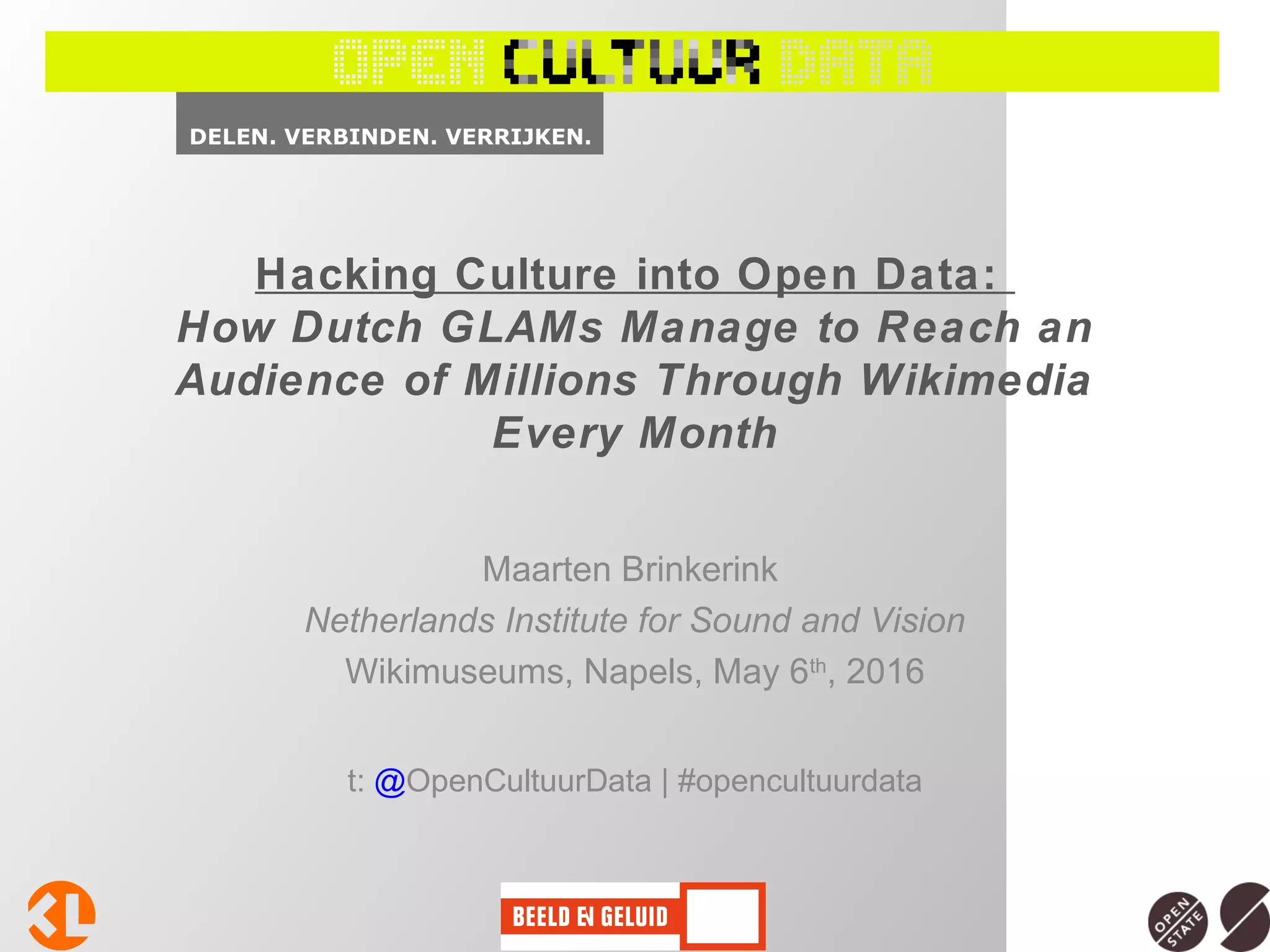
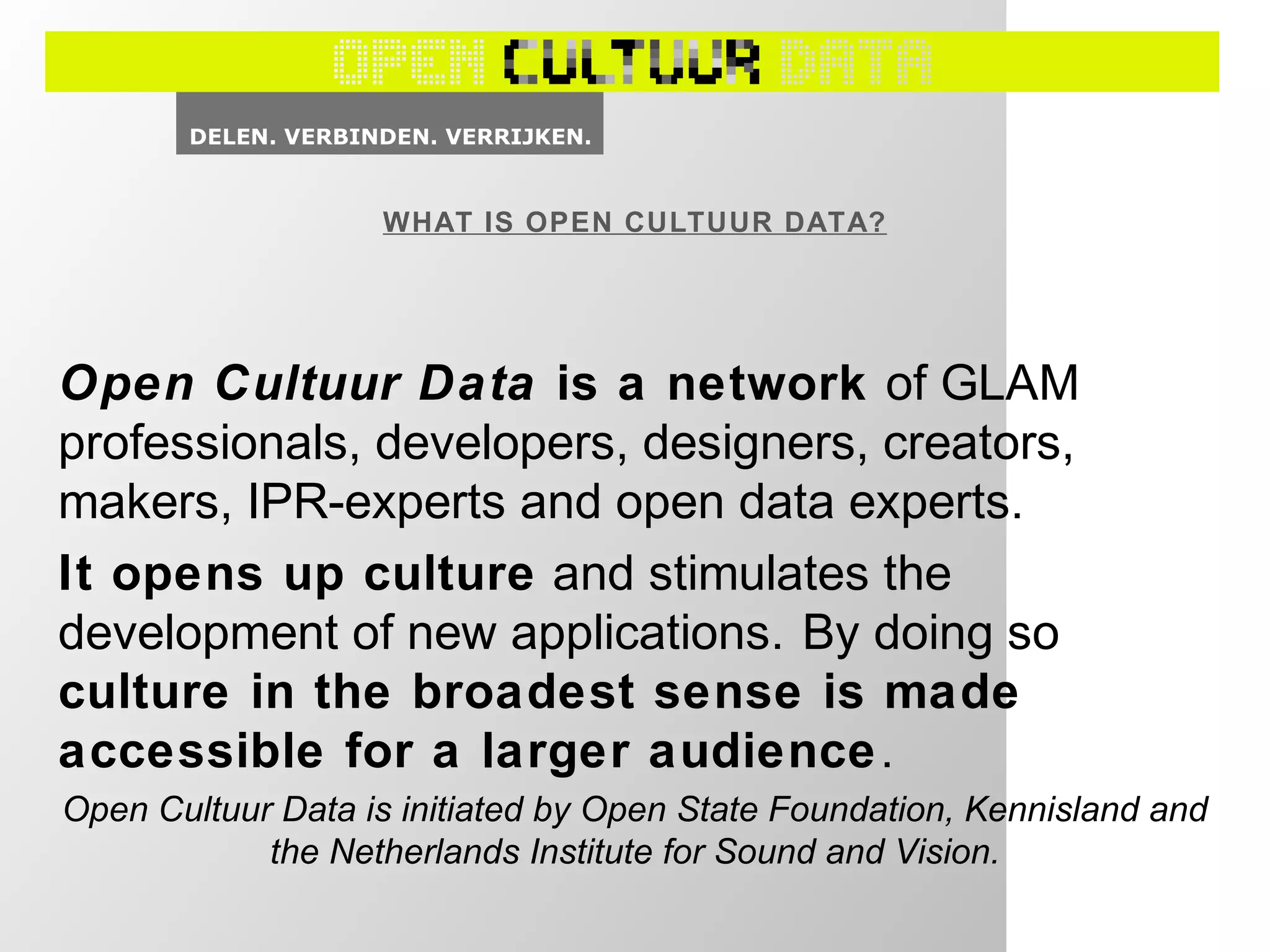
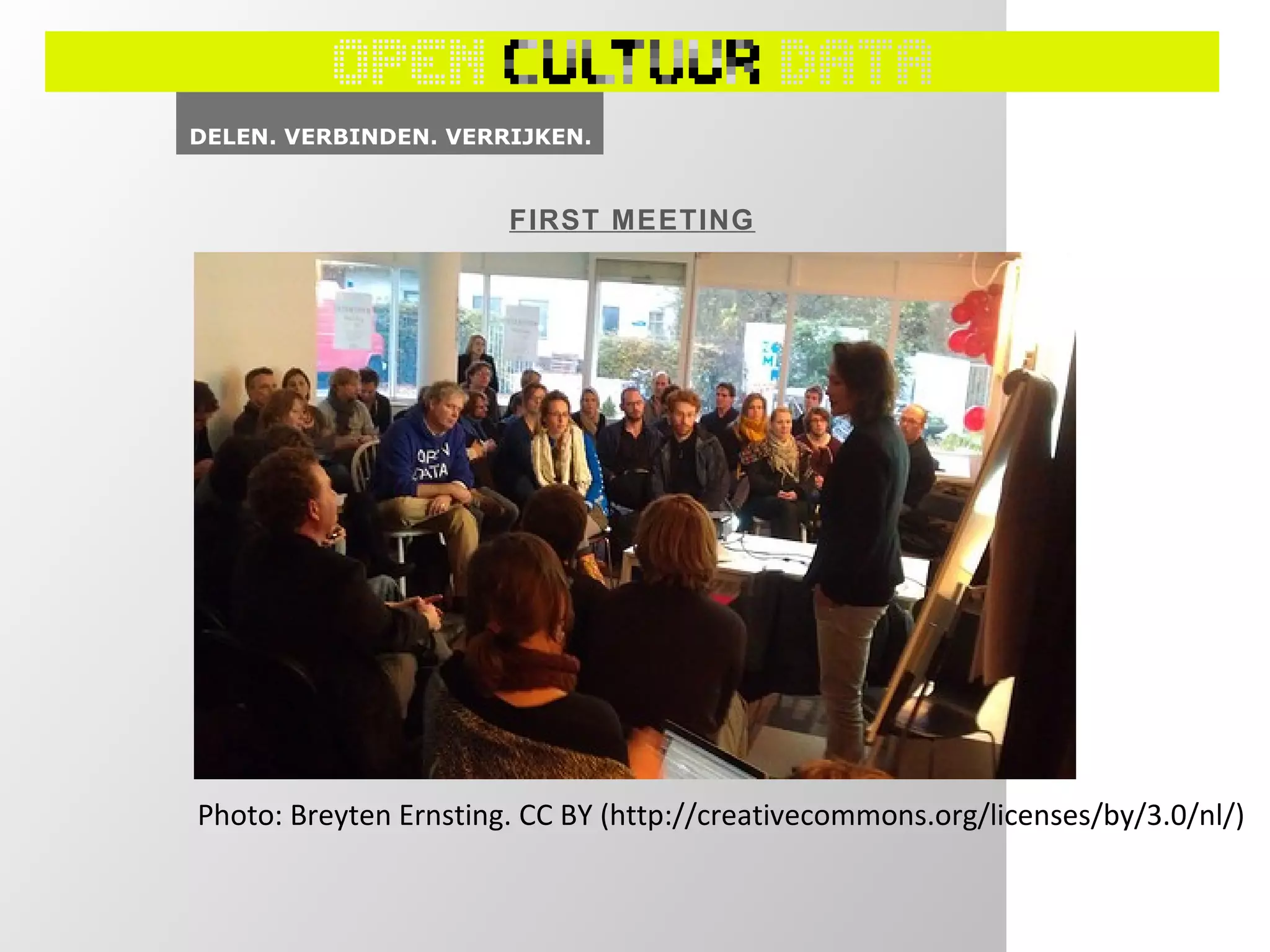
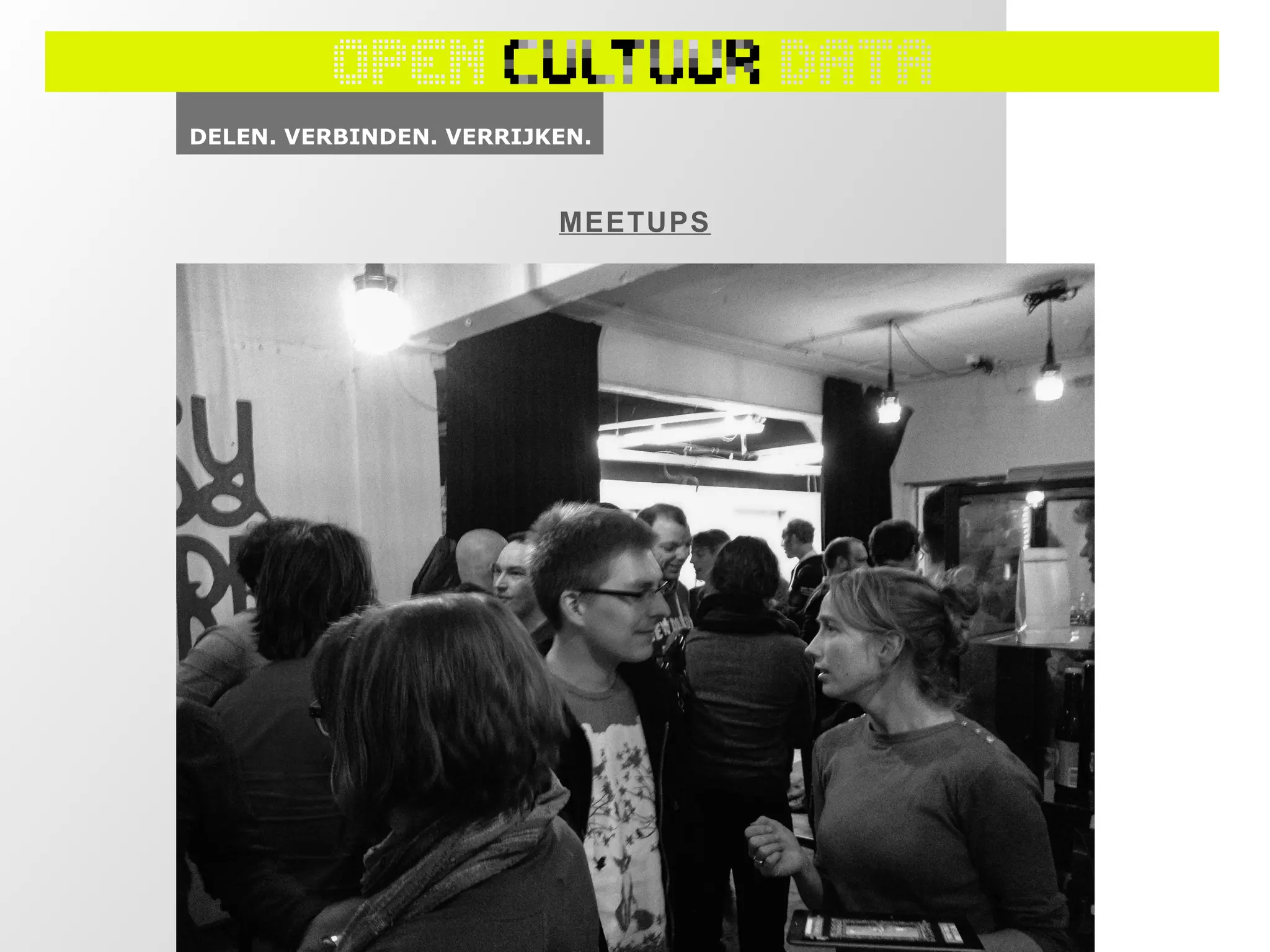
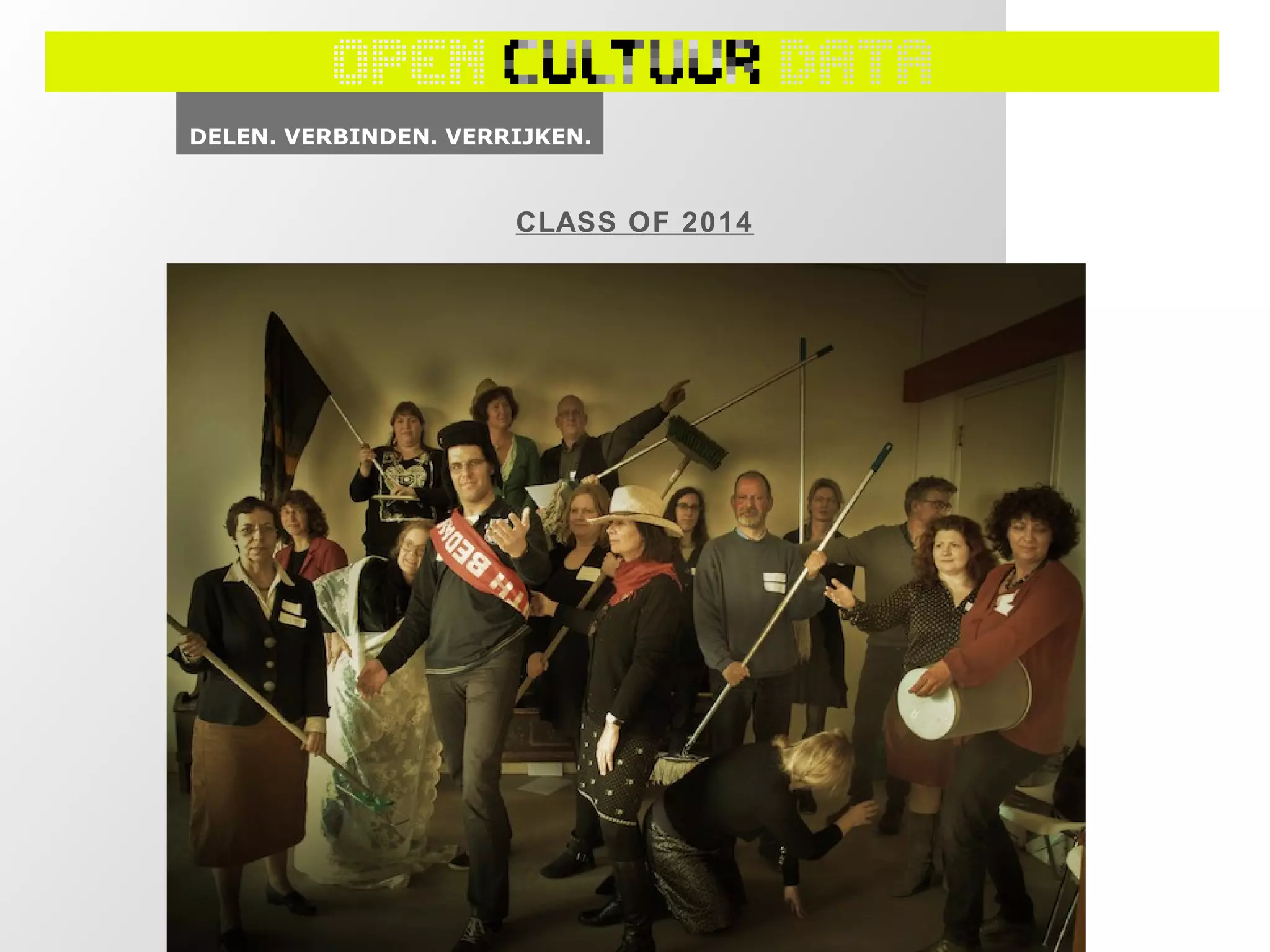
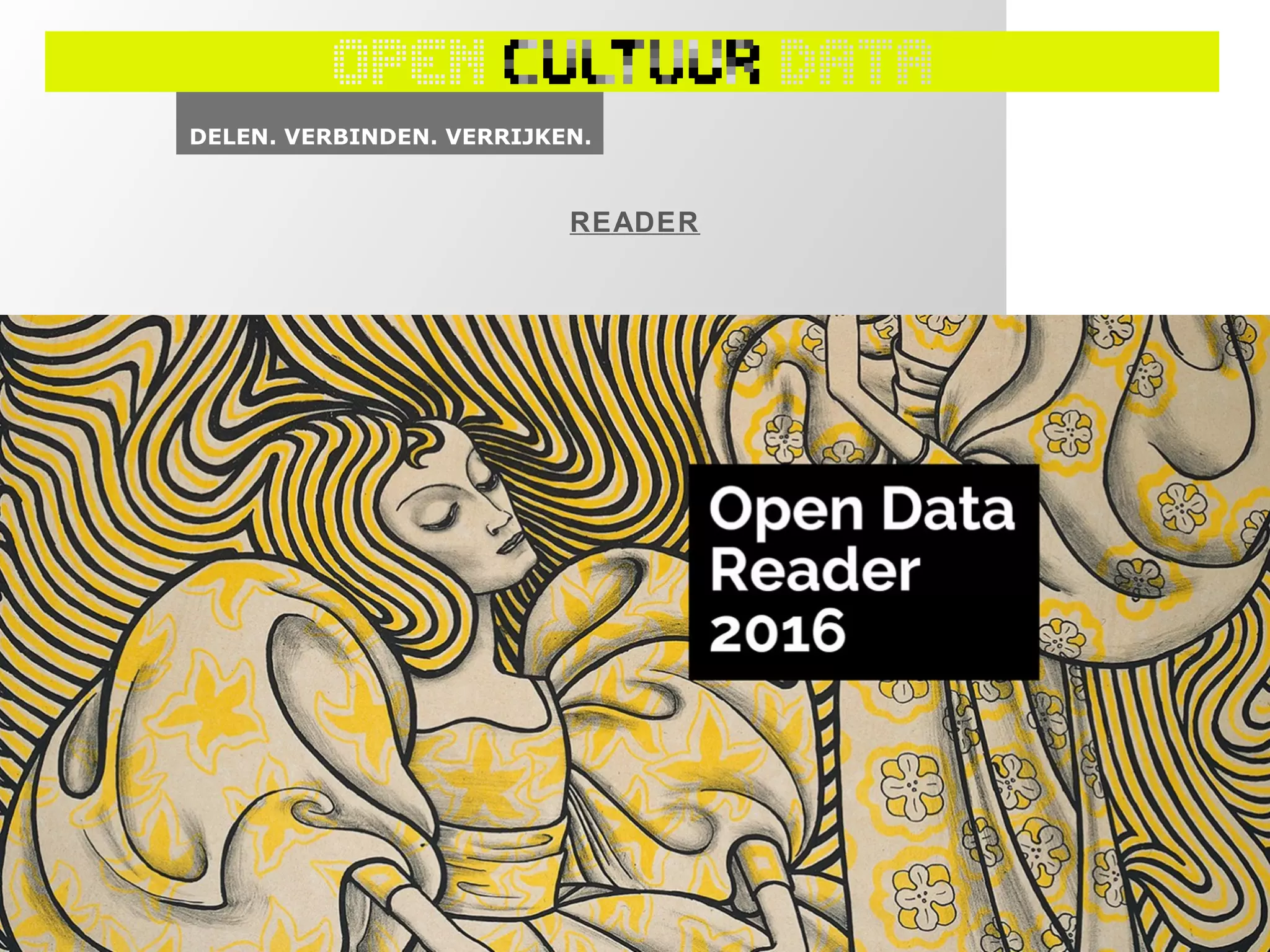
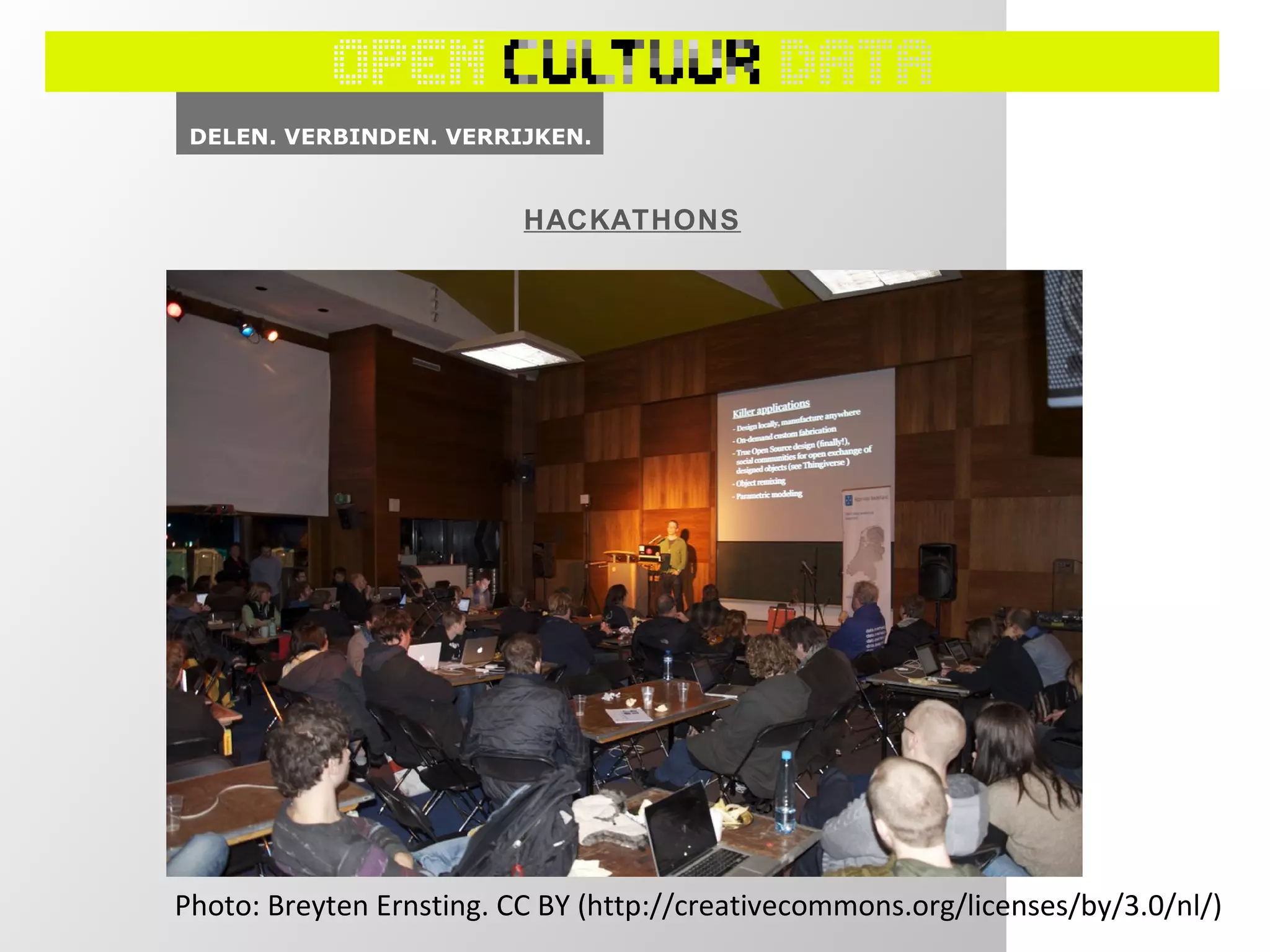
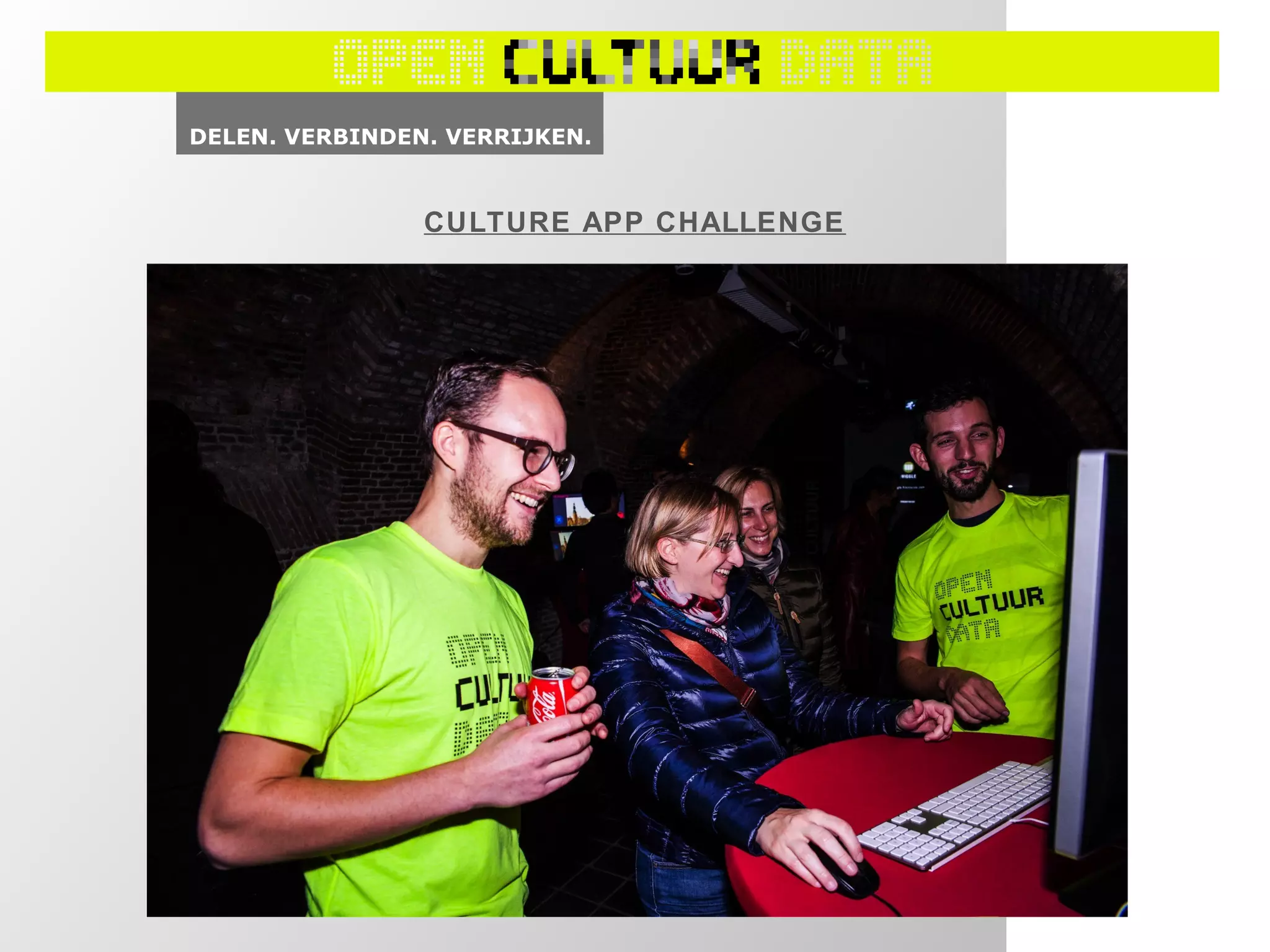
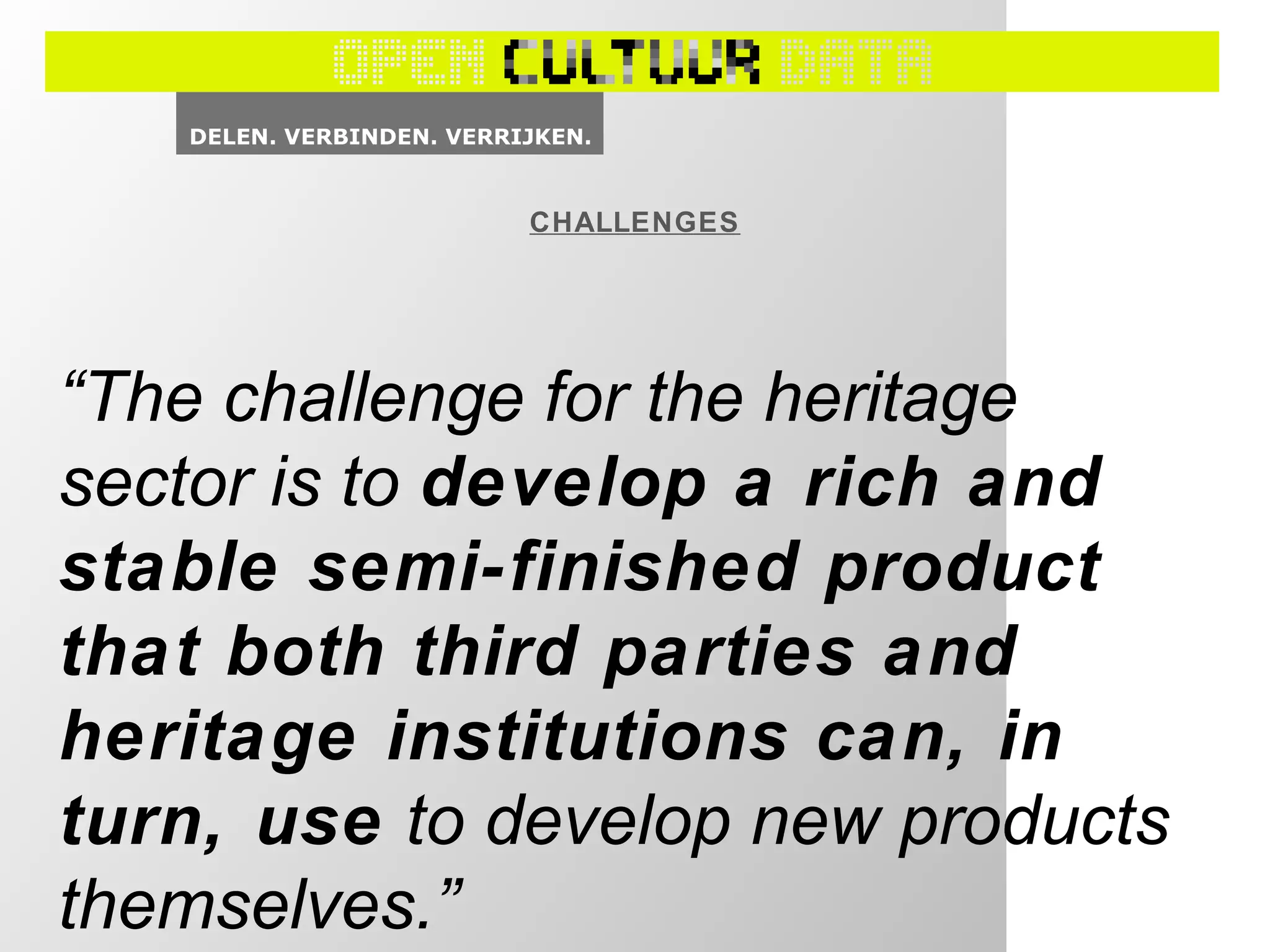
![CHALLENGES
“What are the costs
and benefits of
making collections
[openly] available to the](https://image.slidesharecdn.com/ocdwikimuseum-160509084027/75/Hacking-Culture-into-Open-Data-10-2048.jpg)
